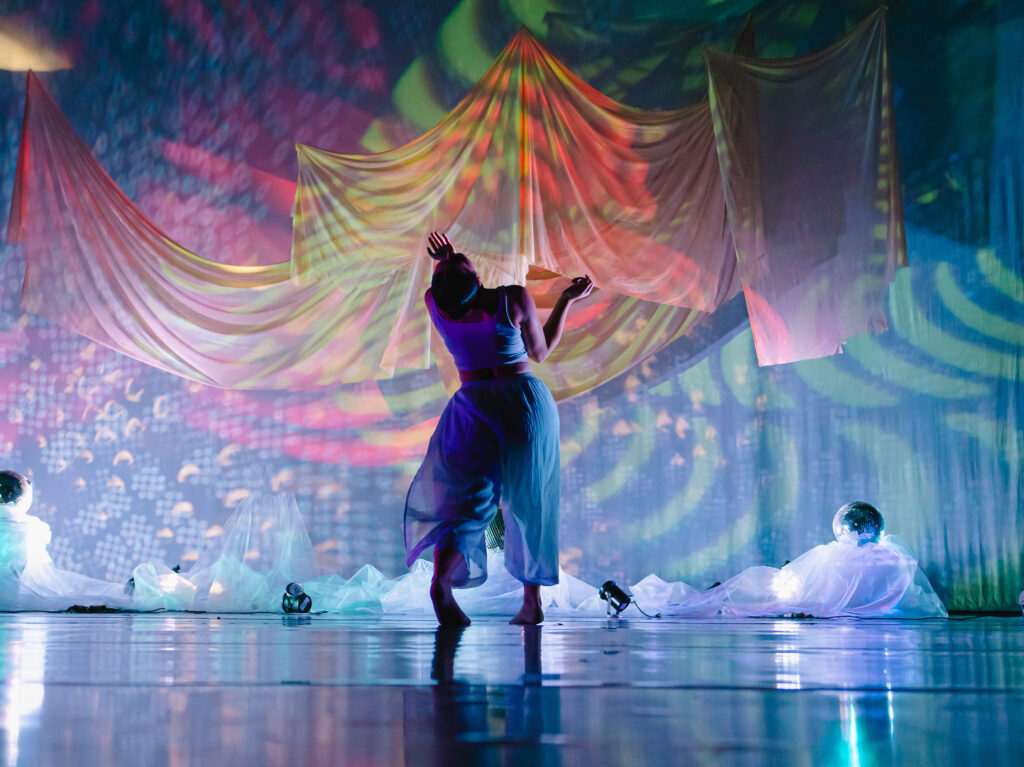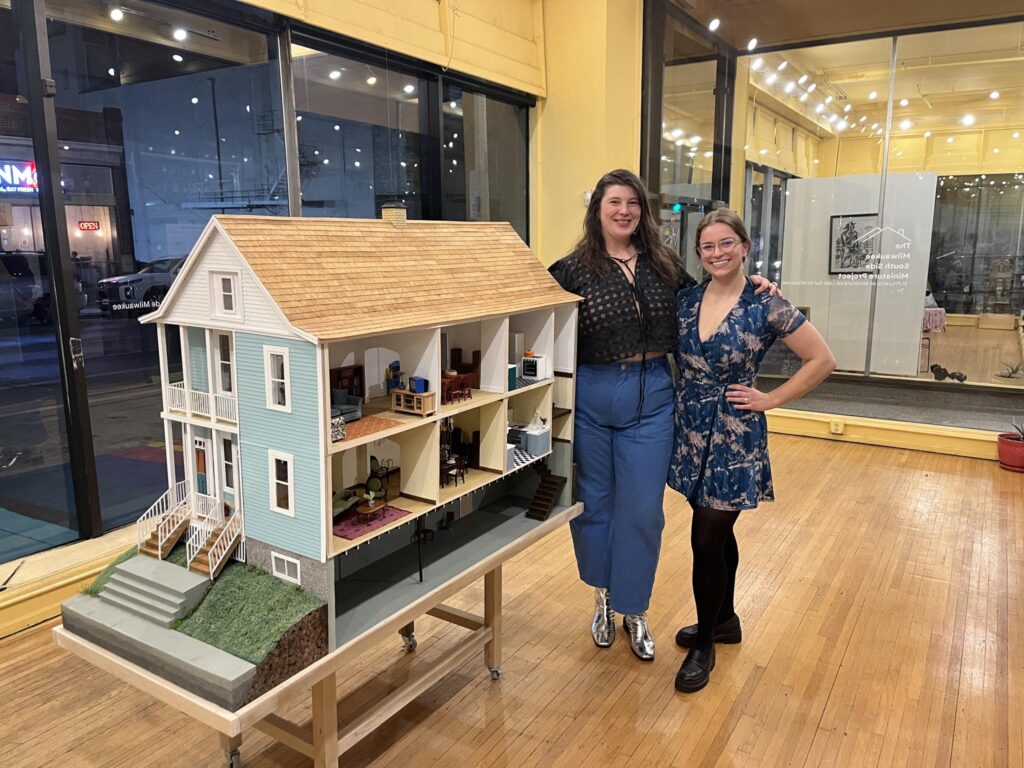GIG Fund
The GIG Fund is a grant of up to $4,000 that supports Midwestern organizations that want to contract with a professional artist to offer activities to their community.

About GIG Fund
Arts Midwest programs are currently under review for compliance with state and federal laws.
The GIG Fund provides flexible grants for nonprofit organizations to support programs and activities featuring professional artists. GIG Fund grants help cover fees for touring or local artists. Funds may also be used for project costs such as accessibility accommodations and marketing. We work with a panel to help us review applications and distribute grants annually.
FY25 GIG Fund applications are now closed. Subscribe to our newsletter for updates on the next round.
In August 2024, 99 organizations across the Midwest received a total of $380,000 through the GIG Fund. These awards are supporting creative projects and educational events in winter 2024 thru spring 2025, helping organizations present artists in their community by offsetting the costs of programming and touring.
All grantees must review and adhere to the instructions detailed in the Crediting Requirements section of your grant agreement. Please use the NEA and Arts Midwest logo lockups below.
For social media posts related to your grant activities, please use the hashtag #artsmidwest.
Locked Up Logos
- Full Color jpeg file
- Black & White jpeg file
- Full Color png file
- Download a zip file of all logos and crediting requirements
Compliances & accessibility
Assurance of Compliance: All funded engagements must comply fully with all federal statutes and regulations on the Assurance of Compliance.
Accessibility Tools
Visit our Accessibility Center to access tools that can help ensure your engagements are accessible to people with disabilities.
Final reports are completed in our SmartSimple portal. Here’s a PDF of the questions and information we require.
Final reports will include the following information:
- Your organization: Provide some basic information about your organization type and discipline.
- Artist information: Provide the name(s) of the artist(s) you presented/partnered with; the number of artists directly involved; activity type, project discipline, and goal of the project.
- Final Activity Schedule spreadsheet (upload): Date; location with the location’s address, city, state, zip+4, county; brief description, primary age, format (virtual or in-person) and attendance for each activity.
- Population benefiting question #1: By your best estimate, what population (made up 25% or more) by race/ethnicity benefited directly from your activities? American Indian/Alaska Native, Asian, Black/African American, Hispanic/Latino, Native Hawaiian/Other Pacific Islander, White, or No single race/ethnic group made up more than 25% (select one).
- Population benefiting question #2: By your best estimate, what population (made up 25% or more) by distinct group benefited directly from your activities? Adults or youths with disabilities; Individuals in institutions (including hospitals, hospices, nursing homes, assisted care facilities, correctional facilities, or homeless shelters); Individuals below the poverty line; Individuals with limited English proficiency; Military veterans or active duty personnel; or No single group made up more than 25% (select one).
- Population benefiting question #3: By your best estimate, what population (made up 25% or more) by age benefited directly from your activities? Children/youth; Young adults; Adults; Older Adults; or No single group made up more than 25% (select one).
- Engagement narrative #1: Description of the overall impact on your community, the audience, and participants. Provide details of how you reached people with limited access to the performing arts, and how they benefitted from their participation. (4,300 character limit)
- Engagement narrative #2: Provide quotes/feedback from at least two participants that demonstrate the value of this engagement. (1,600 character narrative)
- Crediting: (upload) You must submit a minimum of two examples of crediting. These can include programs, brochures, press releases, email newsletters, your website, and more.
- Images (upload): Submitting images of your engagement is highly recommended, but not required. If you are submitting images, you must fill out and upload the Image Permission & Usage form. Download the Image Permission & Usage form.
*Character count includes spaces.
The GIG Fund panel is a rotating group of individuals with diverse personal and professional experiences related to the arts and creativity. These panelists work with State Arts Agency staff to assess GIG Fund applications and provide input to help guide Arts Midwest’s grantmaking decisions.
Arts Midwest programs are currently under review for compliance with state and federal laws.
The GIG Fund is a program of Arts Midwest that is funded by the National Endowment for the Arts, with additional contributions from the Illinois Arts Council Agency, Indiana Arts Commission, Iowa Arts Council, Michigan Arts and Culture Council, Minnesota State Arts Board, North Dakota Council on the Arts, Ohio Arts Council, South Dakota Arts Council, and Wisconsin Arts Board.
Arts Midwest is also generously supported by 3M and individual donors and partners.
GIG Fund Stories + Updates
-

Understanding Milwaukee History Through a Miniature House
January 29, 2025
An art project by Mitchell Street Arts captures Milwaukee’s immigration history in the form of a miniature home.
-

Announcing 99 New GIG Fund Recipients
August 21, 2024
99 Midwestern organizations have received a total of $380,000 through the 2024-25 GIG Fund, a grant program from Arts Midwest. These awards will help organizations present artists and educational events in their community.
-

Now Accepting Applications: 2024-25 GIG Fund
April 29, 2024
Does your Midwestern nonprofit want to present performing and visual arts activities between September 2024—May 2025? If so, consider applying for a GIG Fund grant!
Have questions about the GIG Fund?
We’re happy to answer any questions you have about the GIG Fund. Be sure to check out our FAQs, and if you’d like to talk to us we’re just an email or a phone call away.
Read FAQs Schedule a consultation